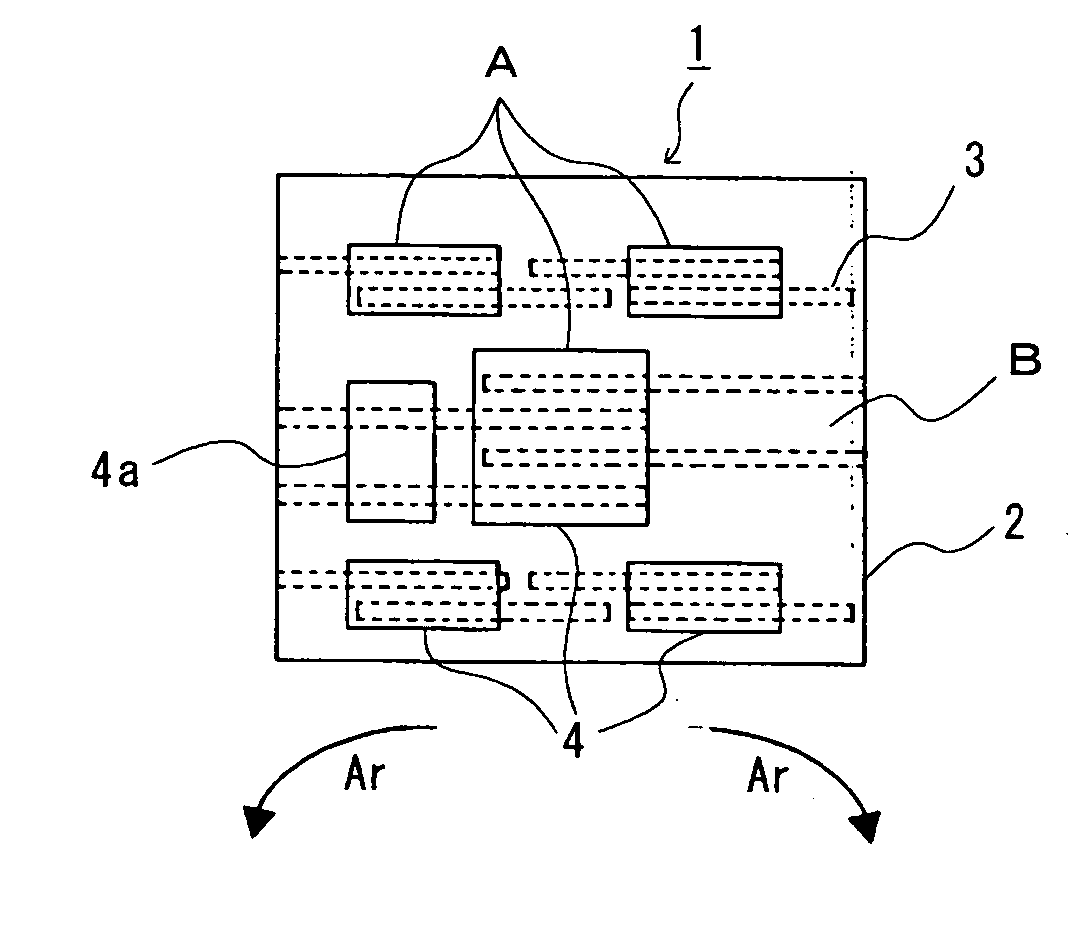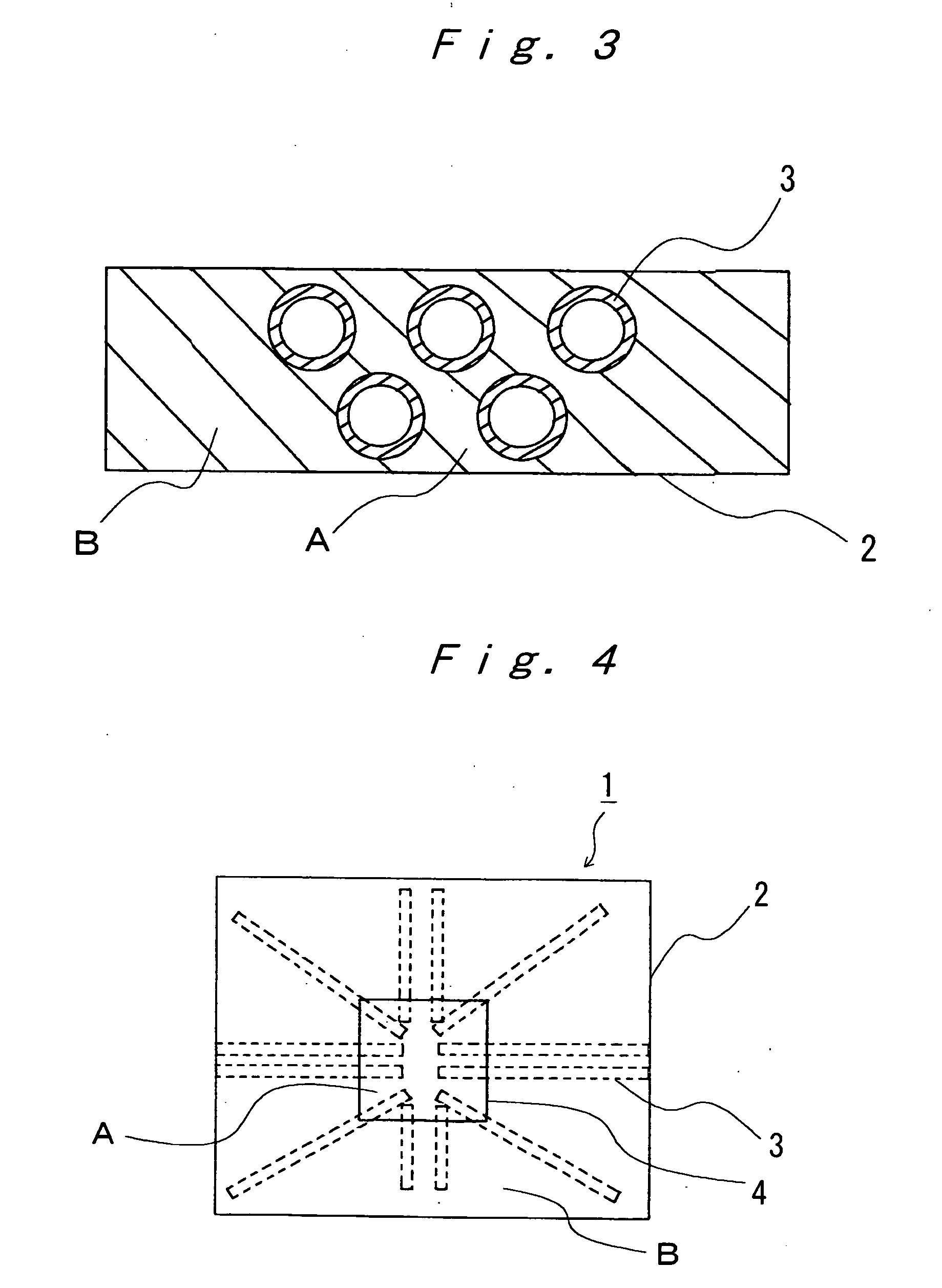Heat Pipe heat sink
a heat sink and heat pipe technology, applied in the field of heat sinks, can solve the problems of pipe failure, cooling capability decrease, insufficient radiation capability of heat sinks having such configurations, etc., and achieve the effect of preventing the temperature of the heating element from increasing significantly and high cooling capability
- Summary
- Abstract
- Description
- Claims
- Application Information
AI Technical Summary
Benefits of technology
Problems solved by technology
Method used
Image
Examples
Embodiment Construction
[0023] Preferable and specific embodiments of the heat sink of the present invention will be explained in detail below with reference to FIGS. 1(a) to 5, but the present invention is not limited to embodiments that are shown in the drawings. The same reference symbols are provided to the same components in the drawings, and duplicate explanations will be omitted.
[0024] FIGS. 1(a) and 1(b) each show a first mode of a heat sink of the present invention, which is a fundamental schematic configuration of a comb-shaped heat sink, FIG. 1(a) is a front view viewed from an opposite side of radiating fins thereof, and FIG. 1(b) is a side view thereof.
[0025] Although FIGS. 1(a) and 1(b) each show an example of a case where a base plate 2 is disposed vertically, the base plate 2 may be disposed horizontally. The base plate 2 and each radiating fin 5 may be formed unitarily by an aluminum extrusion method, and needless to say, any of other alternative methods such as a brazing method, a solde...
PUM
 Login to View More
Login to View More Abstract
Description
Claims
Application Information
 Login to View More
Login to View More - R&D
- Intellectual Property
- Life Sciences
- Materials
- Tech Scout
- Unparalleled Data Quality
- Higher Quality Content
- 60% Fewer Hallucinations
Browse by: Latest US Patents, China's latest patents, Technical Efficacy Thesaurus, Application Domain, Technology Topic, Popular Technical Reports.
© 2025 PatSnap. All rights reserved.Legal|Privacy policy|Modern Slavery Act Transparency Statement|Sitemap|About US| Contact US: help@patsnap.com



